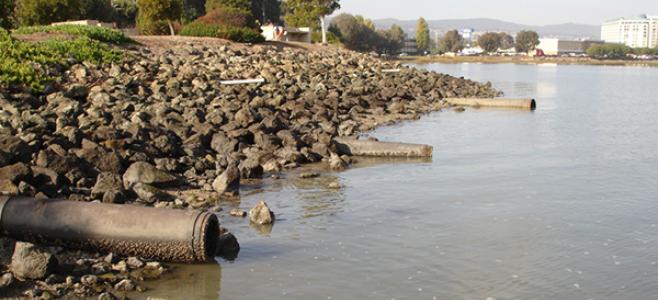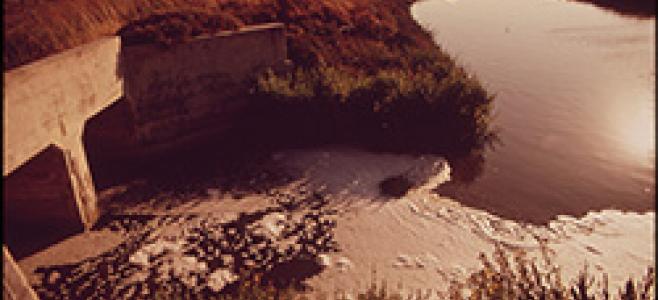During the 2017-2018 rainy season, over 350,000 gallons of sewage-contaminated spills flowed into San Francisco Bay and into creeks that flow to the Bay.
The most recent rainy season’s sewage spill total was far lower than during 2016-17’s exceptionally wet winter, when over 12 million gallons of water contaminated with sewage flowed into the Bay or its tributaries.
But 350,000 gallons is still far too much, and the total would likely have been higher if more rain had fallen.
Sewage spills and overflows into the Bay usually occur during rainy weather. When sewer infrastructure is not properly maintained, large volumes of rainwater seep into sewer systems, causing spills into streets and storm drains that carry the pollution to the Bay. Sewage pollution can infect people who come in contact with the water, and also deplete oxygen in the Bay, threatening wildlife.
Fortunately, Baykeeper’s Sick of Sewage Campaign is making progress at reducing sewage pollution. Our legal action has required sewer agencies serving 20 Bay Area cities to replace leaky pipes and upgrade outdated infrastructure. So far agencies serving ten cities have worked with Baykeeper to reduce or eliminate their sewage pollution.
East Bay sewer agencies need to accelerate their required upgrades. Some of the sewer agencies serving nine East Bay cities, plus the East Bay Municipal Utility District (EBMUD), were recently fined a total of $389,300 by the US Environmental Protection Agency. Oakland must pay the largest fine, and other agencies being fined include those serving Berkeley, Albany, Alameda, and cities in West Contra Costa County.
The fines were levied because the agencies failed to meet the requirements in their legally-binding agreement with the EPA, the Regional Water Quality Control Board, and Baykeeper. For instance, the agencies were fined for sewage spills that reached local waterways, including the Bay, and for failing to fix critically-impaired sewage pipes within one year. The agreement requires the agencies to make major sewer system upgrades over a 21-year period to protect the Bay from sewage contamination.
Richmond’s sewer agency recently agreed to do more to stop sewage spills. One East Bay sewer agency with a history of very high volumes of sewage spills serves the city of Richmond. As a result of Baykeeper’s past legal action, Richmond had reduced sewage spills by 50%, but the agency still had over 40 sewage spills during each of the last two rainy seasons.
Baykeeper recently secured a new 10-year agreement that requires the agency to significantly upgrade infrastructure to prevent sewage overflows, repair or replace over 30 miles of old pipe, and take other specific measures to reduce sewage spills, on a strict timetable. The upgrades will significantly reduce sewage pollution to the Bay and in homes and neighborhoods in Richmond.
Baykeeper will continue working to require Bay Area sewer agencies to upgrade their dilapidated systems, toward a San Francisco Bay free from sewage pollution.
Sewage Spills into San Francisco Bay, for Water Year 2018
494 SSOs were reported in the Bay Area between Oct. 1, 2017 - Apr. 23, 2018
662,717 gallons of sewage-contaminated water was spilled
363,241 gallons reached creeks or the bay


